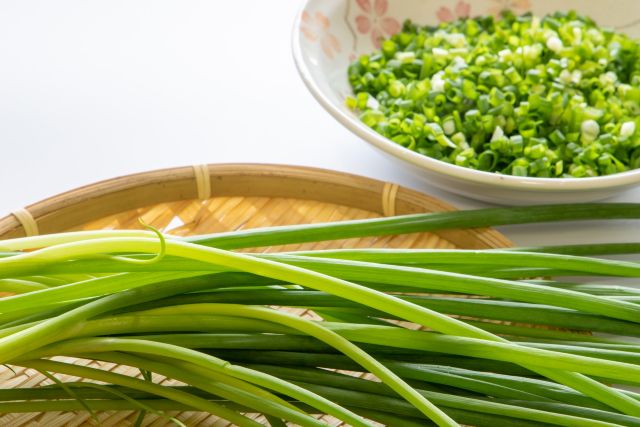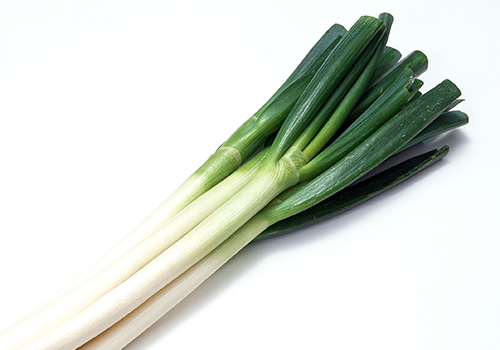
We think foreigners may be unable to tell the difference between Japanese green onions just by looking at them. There are two main types, but even though they are the same onion, they have different names, which can be confusing. In the Kanto region and northern Japan, shiro-negi (Japanese leeks) are commonly eaten, while in western Japan, ao-negi (green onions) are the mainstream variety. Green onions used as a condiment in udon and soba noodles are also Japanese leeks in the east and green onions in the west.

Onions with more white parts are called “Nebuka-negi (根深ネギ),” while those with more green parts are called “Ha-negi (葉ネギ).” In Eastern Japan, the term “negi” simply refers to Nebuka-negi (also called Naga-negi or Shiro-negi), which is grown by mounding soil around the plant as it grows to protect it from direct sunlight, resulting in a strong flavor and thick stems. Other types are distinguished by specific names such as “Wakegi,” “Asatsuki,” “Bannō-negi (also called sho-negi),” and “Kujo-negi.” In western Japan, the thin Ha-negi grown in the sun is called “Ao-negi,” and Nebuka-negi is sometimes referred to as “Shiro-negi” or “Nebuka.”
In summary, the word negi in Japanese cuisine is a broad term that can refer to several varieties: Ao-negi (青ネギ), common in western Japan; Naga-negi (長ネギ), more popular in eastern Japan; and their subtypes such as Bannō-negi (万能ネギ), an improved cultivar of Ao-negi, and Kujo-negi (九条ネギ), a Kyoto specialty. These variations can be confusing to foreigners, but they reflect how regional food culture has shaped the way green onions are used in Japanese cooking.
Onions Commonly Used in Sushi Restaurants
In Japanese sushi restaurants, several types of onions play important supporting roles in flavor and presentation. The most common are Bannō-negi (万能ネギ), a versatile fine green onion; Ao-negi (青ネギ), the standard leaf onion; Naga-negi (長ネギ), a long Welsh onion often used as Shiraga-negi; and Me-negi (芽ネギ), the tender young sprout onion. Each type has its own distinct characteristics and culinary uses.
Bannō-negi, often translated as “fine green onion,” is actually an improved cultivar of the broader Ao-negi group. Compared to standard Aoba-negi, it is thinner, softer, and milder, making it especially suitable as a garnish for sushi or sashimi.
By contrast, Naga-negi has a thick white stalk. In sushi, it is often shredded into fine strips called Shiraga-negi (白髪ネギ), which are placed on top of fatty fish to balance richness with a refreshing sharpness. By the way, Shiraga (meaning “white hair”)-negi refers to the white part of Naga-negi, sliced thinly like white hair.
Another variation is Me-negi, which are delicate and visually appealing. They provide a crisp texture and a subtle, grassy fragrance that complements lighter sushi toppings.
Together, these different forms of onions demonstrate how sushi chefs carefully choose the right variety to balance flavor, texture, and presentation.